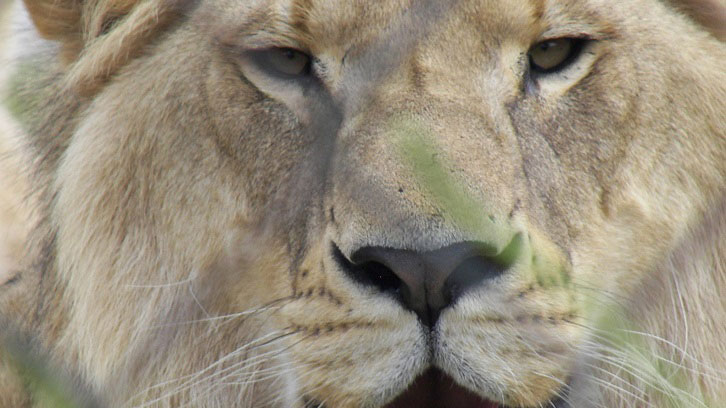Sensorial enrichment with pheromones for improving the welfare of lions in captivity

Although zoos have improved their handling conditions and the spaces where their animals live in captivity, sometimes the animals present abnormal behaviors like stereotypies, aggression or boredom. In order to guarantee the welfare of the animals, it is important to offer them a good environmental enrichment in their enclosures, which gives them the opportunity to display normal behaviors of the species.
Lions (Panthera leo) are social animals that live in groups and, like the rest of felines, use pheromones (a subclass of semiochemicals) for communication. In other felines, semiochemicals have positive results over animals. For example, domestic cat mothers (Felis silvestris catus) secrete the Cat Appeasing Pheromone (CAP) through the sebaceous gland on the mammary sulcus to ensure mother-offspring bonding and avoid kittens escaping from the nest. The application of an artificially synthesized version of this component improves relations between cats living together in the same building. Also the “friendship” pheromone, the F3 fraction of the facial pheromone, has been commercialized (Feliway®) to reduce stress due to any type of environment or daily routine changes in cats’ lives. F3 even has been successful in different behavioral studies on tigers (Panthera tigris).
For this reason, CAP and F3 were used in the form of a gel diffusor in a center holding 18 lions of different ages who lived in 3 different groups (of 8, 7 and 3 individuals each group). The gel was inside plastic containers (similar to the air freshener at home) and they were placed along all the fences surrounding the lions’ enclosures. The experiment was repeated twice and control and baseline measurements were also done.
Behavior was studied in order to look for differences between treatments, making observations and calculating the time they dedicated to each activity (for example walking, playing, sleeping, self-grooming, etc.).
Results indicate that both F3 and CAP increase the quantity of time animals employ in “play-like” interactions. F3 increased the times of social behaviors and activity of the lions too. Semiochemicals acted as potential reducers of anxiety and stress due to captivity (in this particular case animals were kept inside individual cages during the night, and had visual and olfactive contact with other groups during the day which led to aggression through the fences) and this allowed them to increase social activities.
These semiochemicals have a positive effect on the captive lions’ behavior and can be considered as a potential tool for sensorial enrichment to improve animal welfare.
References
Martínez-Macipe, M.; Lafont-Lecuelle, C.; Manteca, X.; Pageat, P.; Cozzi, A. Evaluation of an innovative approach for sensory enrichment in zoos: semiochemical stimulation for captive lions (Panthera leo). Animal Welfare. 2015, vol. 23, num. 4, p. 455-461. doi: 10.7120/09627286.24.4.455.


